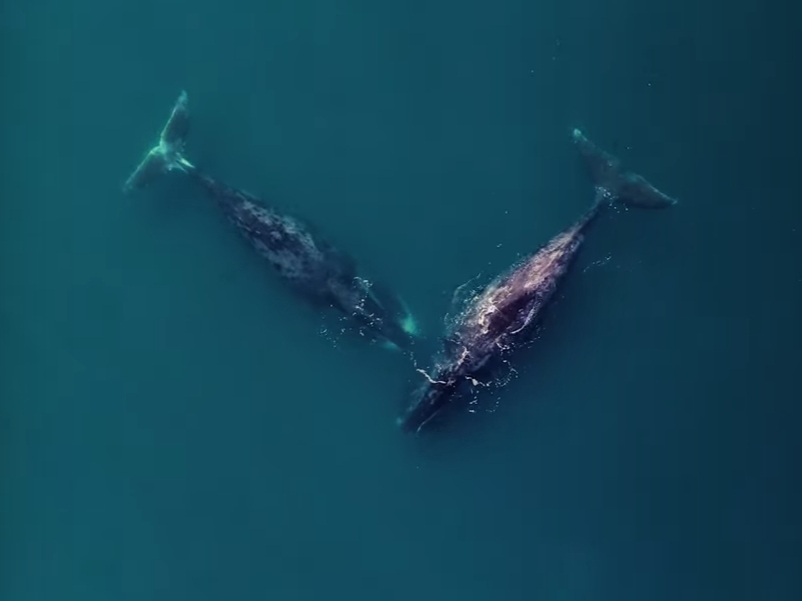
At the end of September, the next field season of the team of specialists on marine mammals of the Institute of Ecology and Evolution of the Russian Academy of Sciences in the Sea of Okhotsk ended. The project for the study of the endangered Okhotsk population of the bowhead whale is headed by a researcher of the Institute, Ph.D. Olga Shpak, who has been researching cetacean populations in the Shantar region of the Sea of Okhotsk for over 10 years. This year the work is being carried out under a grant from the Ocean Park Conservation Fund Hong Kong (OPCFHK). In the field team of IEE RAS, wonderful people worked: a young scientist and photo-ID specialist Milena Morozova, paramotor pilot Alexander Bogdanov and his wife, pilot assistant and "Universal Helper" Alexandra Solovova, and professional drone operator Sergey Abarok.
In addition to observing the behavior and distribution of whales, taking biopsies normally and replenishing the photo catalog, this time the team set itself ambitious tasks: to install satellite transmitters monitor the migratory routes and winter habitats of whales, and also to test a new way of taking biopsies - from a drone.
Sasha Bogdanov's professionalism and courage made it possible to establish a satellite tag on one whale (who was accordingly named Bogdashka). Scientists hope very much that Bogdashka will virtually take them to his winter site. After all, nothing is known about where bowhead whales spend winter in the Sea of Okhotsk. But even today, after 5 weeks of satellite data transmission, important information has already been received on the nature of the movement of whales in the Shantar area in the summer-autumn period.
Using a drone (DJI Phantom 4 Pro with Fli-Fli release mechanism) to perform biopsy on bowhead whales promises to be successful. The team managed to collect several samples of leather, but had to admit that the design requires improvement (which will be done by the team in the winter). More than 30 skin samples were collected in a classical way and will be analyzed at the Institute's Molecular Center. The data obtained will help to clarify the size of the Shantar summer whale herd and the dynamics of the population size.
This year's work was carried out mainly in Wrangel Bay, based in a tourist camp, with the full support of Far Eastern Expeditions LLC represented by its General Director Bakht Mavlanov. The number of tourists wishing to see whales is growing every year, and it is obvious that there is a need to create the Rules of Whale Watching and regulation of tourist activity in key places with high numbers of whales. Scientists have met from the tour operator a full understanding, willingness to contribute to research, to support conservation measures and ensure sustainability and environmental safety of tourism in the area.
Drone pilot Sergei Abarok, invited by the Splav Company LLC, recorded every step, flight and sailing of the scientific team, but most importantly, he did not let the object of study out of the field of view of the camera of his DJI Mavic 2 Pro. While the staff of the Institute is creating a photo catalog from the received video recordings and analyzing the condition of the bowhead whale's skin, Sergey is editing beautiful videos as presented below.
Related materials:
